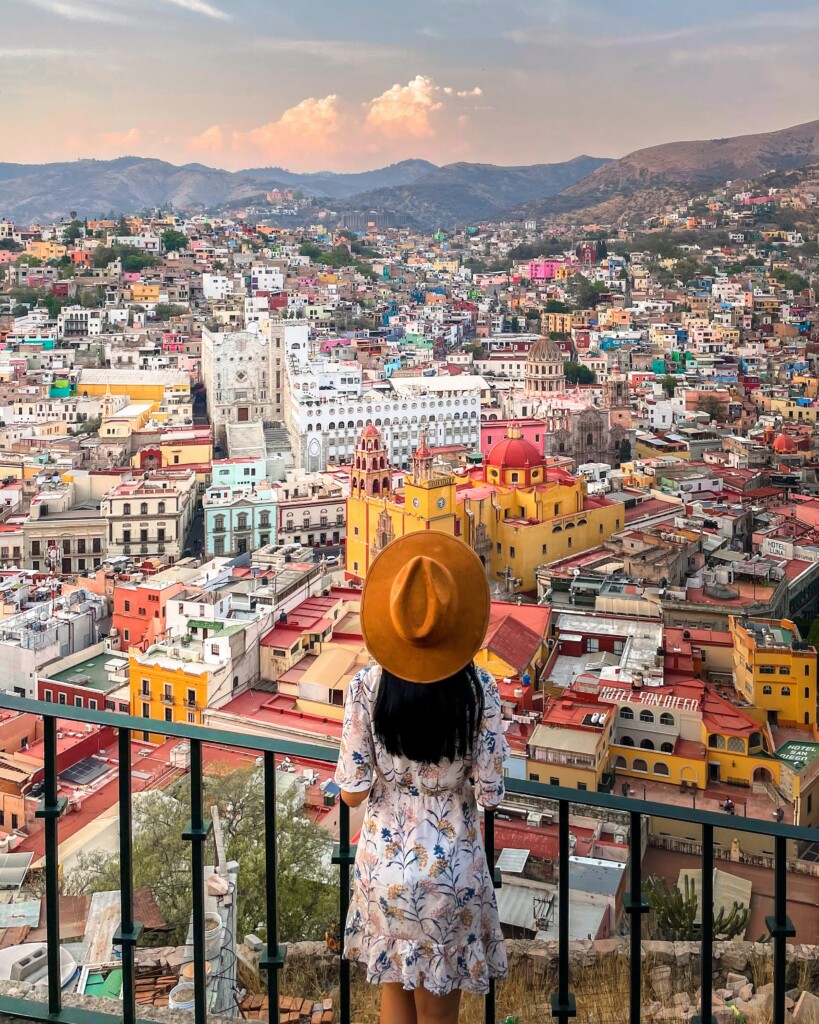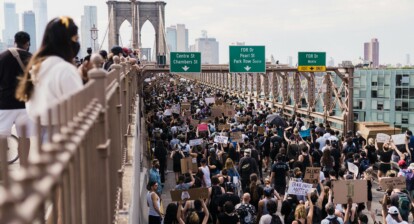“I will build a great, great wall on our southern border. And I will have Mexico pay for that wall.”
Maybe these words sound familiar. In the 2016 elections and his later presidency, Donald Trump promised to build a great, great wall on the southern U.S. border with Mexico. This wall would counter the smuggling of drugs and, as Trump especially emphasized, prevent illegal migration.
34% of the Americans supported the build of a wall.[1] However, scientific evidence shows that the perceived effects that stricter border enforcement might have are not there. The building of Trump’s desired wall would therefore not be an effective measure to counter migration and crime.
Why would building a large wall on the border not be effective to counter migration? And are thethreats of illegality and crime that migration would bring as real as Trump and his supporters might think?
The wall
Before Trump’s presidency, there were just over 1000 kilometers of border barriers. He promised to extend that to half of the entire amply 3000 kilometers of U.S.-Mexican border, with geological circumstances doing the rest[2]. More than 10 billion dollars have been spent on the project. Up till now, most of the construction work has been put in replacing already existing barriers. During Trump’s term, approximately 700 kilometers of border construction was started, of which a little less than 80 kilometers was new barrier[3]. Not much of the promised new wall has thus come into place, but work has started.
Now that Trump has not been reelected, current president Joe Biden has suspended the construction of the wall. Donald Trump, however, has left an impression on American politics. Besides, the Department of Homeland Security hinted that constructions on the wall might still continue.
The wall has not been completely built, but we can look at research on the current U.S. border enforcement to see why strengthening it, for example by building the wall, would not have the anticipated effects.
Although it might seem logical that building a wall might reduce the flow of migrants to the U.S., there are several reasons why continuing the construction on the border would not be effective in countering illegal migration.
Walls do not stop illegal migration
Firstly, by building a wall Trump targets the sending country of migrants. The United States itself, however, remains a huge magnet for migrants. Migrants, legal and illegal, are often attracted to a country by the opportunity to work or family reunion. As researchers from Texas Tech University found, as long as the U.S. has its demand for labor and social networks, migrants will keep coming[4].

One might think that migrants are less likely to attempt to enter the U.S. when they know there will be strong border enforcement to hold them back, for example, a wall. Researchers tested this through a survey among returned and prospective migrants and their findings suggest something different[5]. Even though stricter border enforcement makes it more difficult to cross the border, this does not influence the decision to migrate. Besides, the more information they have on the border enforcement, the more likely they will attempt to enter the host country. After all, they have more information to elude possible difficulties.
One of the main objectives surrounding the construction of Trump’s border wall is to stop illegal migrants from entering the country. Stricter border enforcement through the build of a wall will likely not negatively affect underground migration, which is illegal migration that is meant to stay covert and happen out of sight. People smugglers also fall under this category.
Multiple researchers indicated that people smuggling will increase as borders are fortified[5] [6]. As it becomes more difficult for people to cross, they will call in the help of professional people smugglers, so-called “coyotes”. Building a wall would rechannel flows of illegal migration while increasing the demand for illegal “coyotes”, which is not what Trump promised the wall would do.
Visa overstays – “2/3 of migrants arriving in the U.S. were visa overstayers”
Many assume that illegal immigrants enter the United States at the border. Actually, the majority of illegal migrants consists of visa overstayers. These are people who entered the U.S. with a legal visa and stayed after its expiration. Research from the Center for Migration Studies[7] showed that since 2007 the number of visa overstays was larger than the number of EWIs (entries without inspection). EWIs are the illegal immigrants who cross at the southern border.
In addition to that, in 2014 even 2/3 of migrants arriving in the U.S. were visa overstayers, while the other part consisted of EWIs.
Building a wall would thus be ineffective to counter this illegal migration, since these people can initially cross the border legally. It is hard for a wall to hold them back when they are already in the country.
No increased criminality – “More immigration does not mean more crime”
It is a widespread perception that immigration and crime are linked in some way. Approximately 40% of republicans associated illegal immigration with increased crime[8]. This view also played a role in the proposal of building a border wall.
Research has shown, however, that more immigration does not necessarily lead to more violence and crime and even showed a significant negative relationship between the two[9]. More immigration would thus not mean more crime. One of the most important reasons found for this is that family instability is significantly associated with crime, while immigration reinforces more stable families. Immigrant families are more often two-parent families and are less often divorced. Their family structure thus makes them negatively associated with crime.
Trump also wanted to address the problem of drug smuggling. It is so that the majority of drugs smuggling into the U.S. happens on the southern border with Mexico. It is the question of whether a barrier will reduce drug smuggling. From what is known now, we can see that barriers mainly alter drugs smuggling instead of directly reducing it. Smuggle ware is passed over, under, through, and around barriers[10]. For instance, a new border barrier in San Diego concurred with an increase of smuggling over water along the coast. Also, new ways are thought of to effectively pass drugs through official ports of entry, which is where most apprehensions are concentrated.
As we can thus see, continuing the build of a wall along the entire U.S.-Mexican border would not be effective in preventing illegal migration. Besides, the perceptions people have of illegal migration do not always correspond with empirical findings. This also counts for the perceived threat of criminality, which is not as real as Trump and his supporters might believe. The build of a wall is therefore unnecessary and costs valuable resources and time. Resources and time that could better be spent on more targeted ways and more real concerns.
Referenties
[1].https://abcnews.go.com/Politics/64-oppose-trumps-move-build-wall-asylum-30/story?id=62702683
[2].http://www.profmex.org/cronicasinfin/noticias/Trump_wall_all_you_need_to_know_about_US_border_in_seven_charts.pdf
[3].https://edition.cnn.com/2021/01/21/politics/border-wall-joe-biden-defense-department/
[4].https://www.independent.co.uk/news/world/americas/donald-trump-border-wall-mexico-us-illegalundocumented-immigrants-research-a8783721.html
[5].Cornelius, W. A., & Salehyan, I. (2007). Does border enforcement deter unauthorized immigration? The case of Mexican migration to the United States of America. Regulation & Governance, 1(2), 139-153. https://onlinelibrary.wiley.com/doi/pdfdirect/10.1111/j.1748-5991.2007.00007.x?__cf_chl_jschl_tk__=2fKaTGJAqaC6POMvTh8znPqQgP9BQ1R5c7KVquX1dII-1639899075-0-gaNycGzNC-U
[6].Cornelius, W. A. (2005). Controlling ‘Unwanted’ Immigration: Lessons from the United States, 1993-2004. Journal of Ethnic and Migration Studies, 31(4), pp. 775-794. https://www.tandfonline.com/doi/abs/10.1080/13691830500110017
[7].Warren, R. & Kerwin, D. (2017). The 2,000 Mile Wall in Search of a Purpose: Since 2007 Visa Overstays have Outnumbered Undocumented Border Crossers by a Half Million. Journal on Migration and Human Security, 5(1), 124-136. https://journals.sagepub.com/doi/10.1177/233150241700500107
[8].https://www.pewresearch.org/politics/2018/06/28/shifting-public-views-on-legal-immigration-into-the-u-s/
[9].Ousey, G. C., & Kubrin, C. E. (2009). Exploring the Connection between Immigration and Violent Crime Rates in U.S. Cities, 1980-2000. Social Problems, 56(3), pp. 447-473. https://doi.org/10.1525/sp.2009.56.3.447
[10].Congressional Research Service. (2020, February). Illicit Drug Smuggling Between Ports of Entry and Border Barriers (Nr. R46218). https://sgp.fas.org/crs/homesec/R46218.pdf







